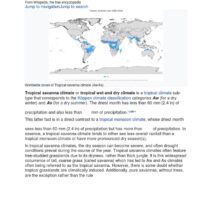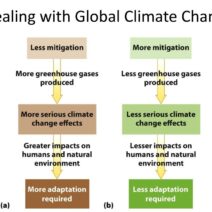In recent decades, the intersection between climate change and seismic activity has garnered increasing attention from scientists and environmentalists alike. The profound alterations in our climate, spurred by anthropogenic activities, have raised a critical question: can climate change influence the occurrence and intensity of earthquakes? To delve deeper into this inquiry, it is essential to disentangle the complexities of geological processes and environmental changes.
Traditionally, earthquakes have been predominantly attributed to the dynamics of tectonic plates—the large slabs of the Earth’s lithosphere that shift and interact at their boundaries. These interactions result in stress accumulation that eventually leads to sudden releases of energy, creating seismic waves. However, a burgeoning body of research has begun to explore the potential correlations between climatic fluctuations and seismic activity, suggesting that the relationship may be more profound than previously assumed.
One salient factor in this discussion is the concept of glacial isostatic adjustment; this phenomenon occurs as glaciers recede under the influence of rising global temperatures. As massive ice sheets melt, the weight they once exerted on the Earth’s crust is alleviated, prompting a gradual rebound of the land beneath. This rebound can induce seismic activity, particularly in regions that were once burdened by substantial ice masses. For instance, scientists have observed increased earthquake occurrences in parts of Scandinavia and Canada, where the melting of glacial ice correlates with heightened tectonic movements.
Furthermore, fluctuations in water levels can significantly impact seismic dynamics. Large reservoirs created by the construction of dams often lead to what is known as induced seismicity. As water fills these reservoirs, it exerts tremendous pressure on the underlying crust, which can, in some instances, provoke earthquakes. The correlation between large hydrological projects and seismic events has been documented across various regions, signifying an intricate interplay between water management and geological stability.
Additionally, the withdrawal of groundwater, a common consequence of extensive agricultural practices and urban development, can lead to the destabilization of the subterranean structure. When groundwater levels diminish, the support they provide to the earth’s crust is compromised, potentially triggering seismic events. Such processes illustrate the multifaceted relationship between human activity, climate-driven changes, and geological phenomena.
Besides these direct connections between climate and seismicity, the broader implications of climate change cannot be overlooked. As global temperatures rise, the increasing intensity and frequency of extreme weather events may further complicate the landscape of geological stability. For instance, heavy rainfall associated with climate phenomena such as El Niño can increase the risk of landslides, which, while not earthquakes per se, can induce significant geological disturbances and secondary seismic activity.
Moreover, the thermal expansion of seawater and the melting of polar ice caps contribute to rising sea levels, which can lead to coastal erosion and subsidence. These processes can exacerbate geological vulnerabilities near fault lines, potentially fostering an environment conducive to earthquakes. The nuances of sea level rise and its effects on tectonic integrity warrant further exploration, as researchers work to develop comprehensive models that incorporate these variables.
Despite the plausible associations between climate change and earthquakes, it is crucial to recognize the limitations of current understanding. While there is a growing consensus about the links between glacial movements, hydrological dynamics, and seismic activity, the sheer complexity of the Earth’s system means that clear cause-and-effect relationships are challenging to establish. The interplay of numerous factors, including geological composition, fault line characteristics, and historical seismicity, adds layers of complexity to any investigation of these phenomena.
Additionally, skepticism exists within the scientific community regarding the extent of climate’s influence on seismic activity. Some experts argue that earthquakes remain primarily geological events, asserting that the contribution of climatic factors is minimal compared to the dominating role of tectonic forces. This discourse invites ongoing research to better delineate the boundaries of climate-induced seismicity and to enhance predictive models that inform risk assessments and disaster preparedness.
As an understanding of the interconnectedness between climate change and seismic activity evolves, it becomes increasingly vital to integrate these concepts into climate policy and urban planning. Communities located in seismic risk zones, particularly in light of climate-induced changes, must prioritize resilience and adaptability. This includes investing in infrastructure capable of withstanding both the effects of climate change and the potential for increased seismic events.
The inquiry into whether climate change can cause earthquakes reflects a broader fascination with the Earth’s dynamic systems and the delicate balance that sustains them. As our planet continues to warm, the implications for geological stability and human safety become increasingly urgent. Addressing these challenges necessitates a multidisciplinary approach that encompasses geology, climatology, and environmental science, fostering collaboration aimed at safeguarding communities and enhancing our understanding of the Earth’s processes.
In conclusion, while the jury is still out on the precise nature of the relationship between climate change and earthquakes, the potential links warrant serious investigation. Scientists are gradually unpacking these connections, revealing a tapestry woven from numerous threads—tectonics, hydrology, and climate. This endeavor not only augments scientific knowledge but also equips society with the tools needed to navigate the complexities of a changing world.



